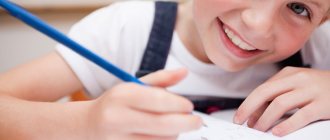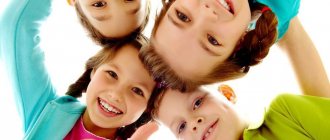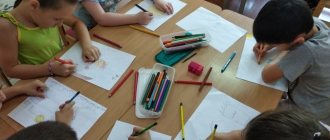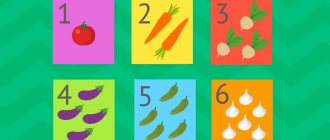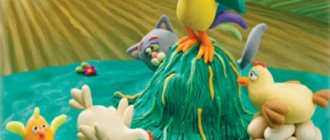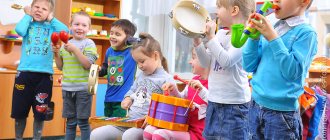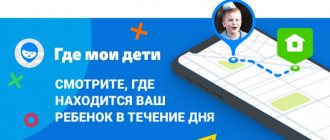Proper preschool preparation is the key to excellent results at school. It would be best if you start preparing from the age of 4, because the school requirements for first-graders are quite high. And if the child has already gone to school and his parents have not worked with him before, then it will not be easy for him. There is a list of specific skills that every first grader must master in order to be ready to learn the necessary material at the school desk. And there are methods that will help parents prepare their babies even at home.
What skills should a first grader have?
What are the requirements of the Ministry of Education for a modern schoolchild? Today, every first grader should be able to:
- introduce yourself and tell a little about yourself and your family members, your interests and hobbies;
- distinguish vowels from consonants, be able to read light text and write block letters;
- list the days of the week, months and seasons;
- tell about morning, lunch and evening;
- perform addition and subtraction of prime numbers;
- distinguish geometric shapes: circle, square, rectangle, star, and also draw them yourself;
- retell a simple text;
- find an extra item among those listed and explain why it is extra;
- dress, undress, wash and make the bed;
- respect and listen to elders, be cultured;
- distinguish colors and shades;
- describe the image;
- count to 20 and back;
- know body parts;
- distinguish between questions: when? Where? Why? And be able to answer them;
- distinguish between animate and inanimate objects;
- peacefully defend your opinion and not get into a fight;
- speak politely and clearly;
- attend lessons quietly and without whims, do not distract other children and listen to the teacher.
These are the most basic requirements and, as you can see, there are many of them. And in order to teach a child all of the above, you must follow some rules:
- increase the load gradually. Give new material only when the child has mastered the old one;
- classes should be short (15-20 minutes maximum), then take a break (15-20 minutes). Let the child rest and engage in physical activity;
- change types of activities so that the child does not feel overworked and bored;
- classes should include game elements. Invite your child to study, don't force him. Explain why a person should be educated. Do not hit or punish your child if he does not want to study today;
- If you use a textbook, let it have a lot of bright and memorable pictures. This way the child will learn the material better and faster.
SAMPLE LIST OF KNOWLEDGE
To check how ready your baby is for the new stage of his life, you can check the following list of skills. Let us immediately note that the information is approximate, a child may know one thing, but not understand anything else - this is normal, because everyone’s abilities are different. But parents should take on board an approximate list of knowledge and skills.
By the age of 6, a child should know well:
- your full name, address (starting from country), date of birth and age;
- FULL NAME. parents, as well as where they work (there is no need to require the child to memorize the exact name of the company - the profession and the abbreviated name will be enough);
- names of animals and their offspring;
- vegetables, fruits, berries – be able to show them in pictures and in reality;
- give examples of wintering and migratory birds, garden and wild flowers, wild and domestic animals, explain how they differ;
- months of the year (what they are called, in what order they are located on the calendar, what month it is);
- primary colors and shades;
- alphabet - know the sequence of letters in the Russian language, what it looks like, what words it contains.
Some children also know the English alphabet, but this is not necessary.
A child should know all this before entering the doors of an educational institution for the first time.
How to prepare a child for school from 5 to 7 years old?
Today it is important not only to teach your child letters and numbers, but also to begin all-round development. The baby should be comfortable in the company of the same age. In addition, you need to approach this matter extremely carefully so that the child does not lose the desire to study further. Many parents begin to prepare their son or daughter for school quite persistently, and then do not understand why the child shows no interest in studying at all.
In kindergartens it is much easier to prepare children for school, because they are already in a children's group, building a daily routine and getting used to classes. Remember that a prepared child will not only do well in the program, but will also become the life of the party. And if the child does not have some skills, then among his peers he may be considered an “outsider.” If you decide to prepare your child for school on your own, read the recommendations below:
When to start preparing
Going to school is always exciting for both adults and children. Some parents begin preparation in advance so that by the first grade the child has already mastered the skills of reading, writing and counting. There is another category of adults who believe that teaching everything is the task of teachers. Such parents spend almost no time preparing their children for school. Which one is right? There is no correct answer, as well as a clear solution. Each family chooses for itself, based on its capabilities and the abilities of the child.
What happens if a child is not prepared for school? Nothing terrible. In first grade, children will be taught to read, write, and count. But in this case, parents should be prepared that the child may lag behind classmates who have already mastered these skills. A first grader who is learning about letters and counting will have more difficulty with assignments, and homework will take longer. This situation is not conducive to success and can result in such a strong decrease in interest and motivation to learn that the child no longer wants to go to school. Therefore, most parents try to prepare their children for first grade in advance.
Reading training
Pay attention first of all to reading lessons. After all, if your baby masters the basics of reading, it will be easier for him to learn other subjects. Start by learning the letters (preferably in alphabetical order). Remember the elements of the game and try to sculpt each letter from plasticine or clay. Ask your child what this letter looks like.
Read a simple text together and ask your child to find the letters you studied today. Afterwards, you can invite the child to retell the selected text or at least answer the questions.
“He who cannot speak will not make a career”
This phrase from Napoleon should make parents of future schoolchildren think: have they done everything to ensure that their child’s future career gets a good start in elementary school? Let us not yet know who our child will be professionally. We know for sure that correct speech will be useful to him, no matter who he becomes.
But that's in the future. And today he must construct his speech so clearly that the words do not interfere, but, on the contrary, help his thoughts to line up in the correct perspective.
Readiness for school is inextricably linked with the level of speech development. Adults must evaluate: whether the child pronounces words clearly; can he name and identify the main objects around him, is he able to participate in a general conversation, is it easy for him to answer questions from adults, tell a story, describe an incident that happened to him, can he explain what various things are for, can he use prepositions, is he correct? Is the child’s speech grammatical? If the child’s speech development level is insufficient, there is no need to scold him, you need to... play with him!
Cicero said: “Eloquence is something that is more difficult than it seems, and is born from a lot of knowledge and effort.” Of course, he is right, but we are also right when we want our children to want to learn to speak correctly. And this means that we need to interest them in this. First of all, the game. Agree that trying hard in the game will give much more results.
Game tasks should go from simple to more complex: from compiling a logical, coherent story using cards that need to be laid out according to the sequence of actions, to composing stories using pictures with complex plot images. Introduce a moment of competition into the game: for each correctly and efficiently completed task you can give for children, tokens, for example, in the form of stars. This way, children will get closer to becoming real “star speakers.”
For example, tasks could be:
- using cards with images of objects, animals, call them diminutively; distribute by childbirth; change words by numbers;
- make sentences based on pictures;
- look at the picture, listen or read the words that go with it and make up a story based on the picture using these words;
- consider 4 plot pictures depicting characters in a sequence of actions familiar to the child, arrange the pictures in the correct sequence and compose a story based on them;
- consider a genre picture and make sentences with words, highlighting and naming prepositions in sentences;
- take pictures with objects that have opposite characteristics (sour lemon - sweet candy, brave lion - cowardly hare, wide bed - narrow bench, etc.) and name these antonyms.
Literacy is necessary for everyone who wants to achieve success. People with a rich vocabulary and correct, figurative speech are more likely to succeed in everything, because those around them perceive such a person as smarter and more competent. Literacy can be developed starting with learning the alphabet. Then the ability to recognize the place of a sound in a word is acquired, and to isolate the sounds necessary for further learning to read. From the correct understanding of such concepts as sound, syllable, word, sentence, children move on to the conscious composition of coherent statements of various types - narration, description, reasoning; from simple words, children - to compiling logical chains using cards with images.
For example, one of the games, “Couples,” also develops logic and cause-and-effect thinking. Adding cards with objects related in meaning to the plot to the plot pictures will be the basis for composing stories. With the help of this game, you can begin to take your child to a new level of thinking - heuristic, using the method that Gianni Rodari called the “Binome of Fantasy”. If you offer a child two cards with objects drawn on them that are absolutely unrelated to each other in meaning (for example, an ax and an umbrella, a duck and a house), then the brain will try to find a connection between these objects, and the child will develop a creative imagination. A more complex version of this method is the “Fantasy Polynomial,” when three words are taken that are not related to each other in meaning (for example, acorn, pike, castle).
To paraphrase the statement of the famous expert in the field of public speaking Frank Snell, I would like to say: do not allow teachers to paint a false picture of his abilities through your child’s speech deficiencies. Make your child's speech work for him.
Math teaching
When the baby is still 2-3 years old, you can gradually begin to teach counting. Count together steps on a walk, toys at home, candies and fruits. Afterwards, you can show your child the counting sticks and start counting them.
It is very effective to learn numbers in pairs (2 and 3, 4 and 5). This will make it easier for your child to understand adding numbers. When you start explaining to him the rule for adding one, it will not be difficult for him to tell you the correct answer. Take one digital pair per lesson, but before taking new material, review what you have covered.
Geometric shapes can be easily and interestingly studied using cookies of different shapes. Start with simple shapes: circle, triangle, square. The store today has cookies to suit different tastes and budgets.
Once you are familiar with simple shapes, you can learn to draw them.
Remember that you will achieve greater results if you alternate activities between each other.
Teaching writing
Children's hands are not at all ready to write. Here parents will have to try hard to train their son or daughter.
During preparation, exercises and games to develop fine motor skills will play an important role. Already at two years old, you can give your baby different pasta, cereals, some beads and play with him (of course, make sure that the baby doesn’t put anything in his mouth). You can also try tying your shoelaces together and massaging your arms.
Buy children's scissors with rounded ends at the store and show your baby how to use them. Let him try to work with them himself.
When learning to write, start by writing block letters. They are easier to learn, and only then move on to capital letters. Make sure your child practices regularly and teach him not to go beyond the lines on a sheet or notebook. And for this important task, you can buy a good and comfortable pen for the child so that he does not experience discomfort when writing.
There are excellent finger exercises that help kids stretch their hands during breaks between training: “The fish in the lake were splashing in the quiet, warm water. They will either shrink, unclench, or bury themselves in the sand.” At the same time, let the child actively move his fingers and the entire arm.
Buy a notebook from the store that will meet all school requirements. There are a lot of them on the shelves today. Let your baby gradually get used to the attributes of school.
USEFUL RECOMMENDATIONS
Here are a few ideas that will help parents develop their own program for preparing their child for first grade.
- You shouldn’t scare your child or tell him that school will be difficult. It is better to help him get rid of psychological discomfort in a playful way.
- Before lessons, it is important to help your child learn to maintain attention. You can start with the simplest thing - telling him what is really interesting to him, carefully observing whether the baby remains interested. Next, move on to information that is less attractive to the child, but more useful from a learning point of view. The approximate duration of attention is 15-20 minutes, this is the number you should strive for.
- If for some reason a child does not go to kindergarten, at the age of 5 you need to actively introduce him to other children. Otherwise, he will go to school not ready to communicate.
- It is better to teach your child to get up on time in advance, so a month or two before the first bell you need to gradually wake up earlier and earlier.
- In order not to spoil your baby’s eyesight and posture, you need to practice sitting at the table with him and set an example yourself. You can come up with a fun game - whoever sits correctly gets a point, whoever is hunched over loses a point. At the end of the week a count is carried out. Depending on how many points the child scores, the parent prepares and gives him a small gift.
Of course, in the end, each parent develops his own method of preparing a child, taking into account his individual characteristics. However, general advice still needs to be taken into account. And it is important to remember that only patience and attention will help a child overcome the difficulties that arise and enter a new stage of life.
Creativity training
Purchase in advance a starter kit for creative activities: an album, brushes, paints, pencils and felt-tip pens. To begin with, let your child practice coloring coloring pages. Buy several close-up coloring books with different themes (preferably one that your son or daughter likes). Explain that the baby should not go beyond the lines, let him learn to be careful now.
It will be great if you study some geometric figure the day before and then color it together. Or, on the contrary, draw a watermelon or an orange, and then ask your child what shape it has.
Do different activities: draw, paint, sculpt, cut out. This way the child will learn the material covered even better.
Psychological readiness for schooling.
Every child reacts differently to school and the need to attend school every day. However, scientists say that adaptation to school is better when the child has the necessary school skills:
- the baby has an interest in knowledge;
- the child learned to analyze and compare objects and concepts;
- know that at school the child also learns communication skills and awareness of goals.
- the child is concentrated and interested in what he is learning;
- problem solving, overcoming difficulties.
Remember that you can prepare your child for school without turning to a child psychologist for help. Many of the exercises are quite simple so that you can do them at home. But you will have to follow some tips:
- communicate with your baby. Do this while you write, decide, read. Discuss the material covered regularly.
- read more fairy tales and stories and ask some questions later. Let your child learn to analyze what he read, retell the plot to you, or at least name the main characters. Ideally, the child should express his personal opinion about what he read.
- Together with you, your child will begin to understand what school is and how important it is to study. Don’t forget to praise your baby and encourage him, even if he doesn’t succeed in everything right away. After some time, try to switch roles and now let your son or daughter be the teacher, and you the student.
- Never finish your child’s work, teach him to be independent. The maximum you can do is help him (collect toys, get dressed, wash his face)
- Allow the child to independently perform those actions that he strives for and knows how to do. Children are very inquisitive and at a certain age they want to do many things themselves. If you control him all the time and don’t give him freedom, then the child will never learn to eat on his own, tie his shoes, or make his bed. And this, in turn, can cause ridicule in kindergarten and school. And vice versa: the more your child demonstrates independence at home, the more skillful and independent he will be in kindergarten and elementary school.
- Teach your son or daughter to communicate with peers. It is especially difficult for children who do not have brothers and sisters. They have difficulty understanding what it means to share, play together, and not fight. Invite guests to your home or arrange games right in the yard.
- try not to laugh at your child when he doesn’t succeed and refrain from making comments. Children at this age are very vulnerable. From the ridicule of loved ones, a child may develop low self-esteem and an inferiority complex.
- Don’t force your child to study, but motivate him. Tell us how many new and interesting things he can learn in class. This way the material will be absorbed easier, and the baby will study with pleasure.
- teach your child discipline gradually. Explain to him that when the teacher speaks, you need to listen to him and there should be silence in the lesson.
- Explain to your child that he should ask questions to the teacher if he doesn’t understand something from the new material. There is no shame in asking, it is a shame not to know and not to strive to find out.
- Help your child develop self-esteem. Some kids are too aggressive, and some are too calm. Both one and the other can harm the baby in the children's group. Tell your child that different situations may arise at school. You can even play out scenarios of different conflicts and see how ready your child is to solve problems on his own. Help your child do the right thing in a controversial situation. Listen to what he would do in the current situation, and then express your point of view. In any case, you will have to help your son or daughter do the right thing.
Receptions in classes to prepare for school in kindergarten
When preparing for school, it is very important to introduce children to all possible types of pedagogical interaction, in other words, to teach them to work in conditions where the teacher uses various methodological techniques. In the practice of preschool and school education, 4 groups of methods of interaction with students are used.
Verbal techniques
Since the word plays a key role in the development of a child, verbal methods of interaction with children in the process of educational activities are leading. By listening to the teacher’s speech, as well as entering into dialogue and composing monologues, the children learn to find a common language among their peers. In addition, we must not forget that children 5–7 years old, listening to adults, form their own speech image, which largely determines the successful socialization of preschoolers and future first-graders.
Explanation
This verbal technique accompanies any type of activity of preschoolers. Moreover, even if we are talking about repeated instructions for performing a routine moment (for example, behavior at the table or getting ready for bed), an explanation is still necessary, at least in the form of instructions from simple sentences.
It is worth special mentioning the use of explanation as a motivational technique. Children of senior preschool age try to imitate adults in everything, therefore, for speech development and inclusion in one or another type of activity, verbal techniques traditionally used by the teacher can be left to the pupils. For example, give the task to explain to your comrades the procedure for completing an addition example or the progress of working on a craft.
Conversation
In this format, it is possible to build not only the test of material mastery that is accepted in pedagogical practice. With the help of leading questions on the topic, children can create an algorithm for completing a particular task.
For example, before starting to draw, I talk with my students about the following questions:
- What do you need to paint?
- How should we prepare the workplace?
- Why is it important to organize your work correctly?
This is interesting. It is very important to include “why” questions in the conversation, that is, problematic ones. They teach children to think, analyze, and draw conclusions.
Problematic questions should be included in any dialogue with children.
Riddles and poems
Typically, these techniques are used to motivate children to get them ready to complete a task. But in direct educational activities, riddles can also be used to practice the material studied. For example, having completed the repetition of vowels in class, I invite the children to repeat the material they have learned by solving riddles:
- “Watermelon” and “Almanac” begin with this letter. We all see it in almost all words. (The letter a").
- The goat bleats: “Me” and “me”, He only knows “Em” and ... (“e”).
- The hedgehog dozed off under the tree, Someone robbed the animal: Instead of “Hedgehog” there is only “hedgehog” lying near the tree. Where the maples are near the fishing line, “Yolka” became simply “elka”. Come on? How many of you found out what letter the hedgehog slept through? (Letter “e”).
- The first in the words “Needle”, “Oriole”, “Turkey”, “Caviar”. (Letter “i”).
- “Cloud”, “Glasses”, “Wasp”, “KNIFE”, “pendant” and “sausage”... Children have known for a long time that the letter ... (“o”) is similar to a steering wheel.
Poems can also be used for several purposes:
- remember what you have learned;
- get acquainted with new material;
- repeat acquired knowledge, skills and abilities at home (poems are often used as homework).
With my students when studying the topic “Time. Days of the week" we remember the order of the days of the week along with the rhyme:
- On Monday I did the laundry, and on Tuesday I swept. On Wednesday I baked kalach with honey, and on Thursday I played ball. On Friday I washed the dishes, and on Saturday I bought a cake. On Sunday I rested and read good fairy tales.
Reading
In the preparatory group, most of the children can read, so they can be given the task of reading short passages on the topic. At the same time, it is important that the text as a whole and all the words in it are understandable to the children. Reading can be used as a means of implementing a heuristic approach to education - when children find the information they need on their own. For example, in work on preparing for school, this could be understanding the watering regime for indoor plants.
This is interesting. The older the children become, the less they should read aloud, and the more they should involve themselves in this type of activity. Some psychologists claim that this technique contributes to the rapid development of reading skills.
Reading small information blocks by children stimulates other children to quickly master this important skill.
Fairy tales
I use short story sketches to motivate children, to distract them from their current studies and attract them to a common activity. For example, in order to motivate children to engage in educational activities, I offer my kids a fairy tale about Masha, who was afraid to go to school. “Once upon a time there was a girl Masha. She really wanted to grow up quickly and go to school to learn a lot. Masha thought that school would be very fun, there would be a lot of games and entertainment with friends. However, when Masha went to school, she became very scared, because there were unfamiliar children around, and the teacher explained to everyone that they should behave quietly and calmly. And then there were lessons in which the girl did not succeed, and she was afraid that the teacher would scold her. Masha came home in tears; school turned out to be completely different from what she had dreamed of. The mother explained to her daughter that we are all afraid of the unknown, and everyone can make mistakes, there is nothing wrong with that. The next day Masha went to school again, where she made friends with the guys and learned a lot of new and interesting things.” After the children have listened to the fairy tale, you can check your understanding of the plot using questions: Why did Masha want to go to school? What was Masha afraid of? What did the girl's mother say?
A teacher using fairy tales as a method for motivation must take into account that:
- the plots should not be too long, with a large number of characters (2-3 heroes are enough);
- the development of the action should not be overloaded (that is, 1–2 plot twists are quite enough);
- fairy tales must be accompanied by visual aids (pictures or toys from whose perspective the story is told).
Plot sketches should not be long, otherwise preschoolers may lose interest in further activities.
Visual techniques
Children perceive most information from the world around them through the visual channel. Therefore, visual techniques are actively used in preparation for school. Among the most effective are:
- pictures (illustrations accompany not only plot narratives, for example, fairy tales, but also routine moments, for example, the order of folding clothes in the closet after a walk);
- diagrams (this type of clarity is very important for mastering the skill of writing, since in the diagrams kids see the sequence of writing out the elements of letters);
- display (the best way to make children feel involved in a particular activity is to show that an adult is also passionate about it, for example, by completing an application on the topic “Types of transport. Airplane”, the teacher and children can arrange a competition to see who can come up with the most realistic or similar per sample model);
- demonstration (video materials can be used productively when developing topics in mathematics, speech development, and literacy).
Video: learning to add and subtract within nine
Practical techniques
To consolidate the studied material, practical techniques are traditionally used that demonstrate creative comprehension of information:
- drawings;
- applications;
- crafts.
These types of work can be united by a common task - creating a project on the topic. For example, “I am a future first-grader.”
Photo gallery: examples of drawings on the topic “I am a future first-grader”
In the drawings, children depict not only the school building, but also their future image of a first-grader
In drawings, preschoolers express their expectations from school
In the projects, children demonstrate their vision of the image of the school
Parents participate in the creation of the project, providing mediocre assistance, for example, designing inscriptions
Observation
The use of this practical technique is important for the development of a heuristic way of acquiring knowledge by children. That is, the guys themselves obtain information, analyze it and, in connection with this, formulate certain conclusions. The function of the teacher in this case is limited to helping in generalizing and systematizing the material. Observation is organized during a walk or in the form of experiments in a group.
Table: file of observations in preparation for school (fragment)
| Subject | Target | Description |
| Monitoring air temperature changes |
| Children record air temperature in August and September. They come to the conclusion that the first month of autumn is colder than the last month of summer by an average of 5 degrees. |
| Observing the snow melting process |
| Children observe the speed of snow melting and determine that it melts faster near tree trunks, as the roots absorb water. |
| Tree watching |
| Children watch the trees in the area, where sap is released from cracks in the bark - a delicacy for insects. Based on the existing knowledge about the movement of water along the trunk, the guys come to the conclusion that under the influence of spring heat, water with useful substances from the ground moves along the trunk to the branches and buds, from which leaves will soon appear. |
Gaming techniques
Game techniques are actively used in preparing for school, since play is the leading activity of preschoolers.
Didactic games
This type of games is actively used when organizing GCD, since it allows:
- get acquainted with new information;
- practice and consolidate acquired knowledge, skills and abilities;
- repeat the studied material.
There are 2 types of educational (didactic) games:
- content-oriented game actions;
- based on game material.
Didactic games based on game material cultivate perseverance in preschoolers
Table: types of didactic games in preparation for school
| Type | Type of game | Name | Goals | Description |
| Content driven games | Logical | "Flowers in the Flowerbeds" |
| The teacher distributes paper flower beds of round, rectangular and square shapes to the children. Gives out 3 different colored flowers. Children arrange flowers, focusing on the story: “The red flowers did not grow in a square, but not in a round flowerbed. And the orange ones are not on the round one, but not on the rectangular one either. Plant the flowers correctly." |
| Verbal | “I - for you, you - for me” |
| The teacher pronounces the sentence, the children count the number of words in it. Whoever answered quickly and correctly wins and says his sentence, the words of which are counted by the rest of the participants. | |
| Sensory | "Name it in parts" | Practice the skill of composing an image from parts and, conversely, decomposing the whole into parts. | Children put together pictures from individual parts (for example, wheels, body, cab - truck). Then they talk about the purpose of each element. | |
| Musical | "Guess what it sounds like" |
| The teacher plays a musical instrument behind a screen, and the children guess what it sounds like. | |
| Material-oriented games | Desktop-printed | "Seasons" |
| Children quickly group pictures with the names of months, signs of seasonal changes, and then compose a coherent story about the seasons. |
| Playing with objects | These are mainly games with natural materials. For example, count the number of acorns for a squirrel and a hedgehog, distribute equally, give one of the characters more, etc. | |||
| Interactive | These games use computer technology. So, in math classes to prepare for school, children can be offered the game “Masha and the Bear”, in which children, together with the characters of their favorite cartoon, complete addition and subtraction tasks. | |||
Outdoor games
Health-saving teaching methods are the main ones in working with preschool children. For their practical implementation, outdoor games are actively introduced into all elements of the educational process, which also fulfill the task of maintaining the general emotional tone in the group.
Outdoor games lift the spirits of both children and adults
Table: types of outdoor games used in school preparation classes
| Skill to be practiced | Name of the game | Goals | Progress of the game |
| Running in different directions, jumping | "Blind Man's Bluff" |
| Children stand in a circle, one participant is blindfolded. He turns around himself several times. Then the participants scatter, and the trap, with its eyes closed, tries to catch one of them, focusing on steps or other sounds. |
| Spatial orientation | "Trap with Ribbons" |
| Children stand in a circle, each with a ribbon under their belt. At the signal, the participants scatter, and the trap tries to snatch the ribbon. According to a conventional sign, the children stop, and the trap counts the number of players caught. |
| Forming a sense of balance | "Fishing rod" | Learn to jump over a rotating rope. | The driver throws a jump rope across the floor, the rest of the participants must jump over it, maintaining their balance. |
| Ability to imitate | "Ocean is shaking" |
| Children stand in designated circles and perform any movements. The driver walks between the players, periodically puts his hand on the participant’s shoulder and, at the signal “The sea is rough,” performs a movement that the player must repeat. At the same time, the driver takes the player away from the circle. At the signal “The sea is calm,” the participant must run to his circle. If he doesn’t have time, he becomes the driver. |
| Development of attention | "Be careful" |
| Children stand in a line, with several objects in front of them at a certain distance: cubes, skittles, flags, etc. At the driver’s signal, the participants run to the objects and halfway along they hear an indication of which one they need to take. The one who correctly followed the instructions wins. |
| Practicing climbing and crawling skills | "With the ball under the arc" |
| Children take turns crawling under arches about 40 cm high, while pushing a medicine ball with their heads. The number of arcs is determined by the area of the space. |
| Agility training | "The Kite and the Mother Hen" |
| Children stand in a column, the first participant is the hen, the rest are chickens. According to a conventional sign, a “kite” flies out of the nest and tries to grab the chick standing last in the column. The hen runs away with the rest of the participants, turning so as to protect the “chicken”. The column cannot be disengaged. |
Theatrical games group
When preparing for school, several types of theatrical games are included in the educational process:
- role-playing games, in which children, based on personal experience, act out everyday situations (at a doctor’s appointment, in a lesson at school, etc.);
- dramatization, where children perform play actions based on the instructions of the “director,” that is, a teacher or friend (for example, skits based on read fairy tales, participation in thematic matinees, etc.);
- director's games, that is, performing game actions based on an invented plot (for example, acting out saving hares from a flood in the forest on a flannelgraph);
- finger games are exercises for training fine motor skills aimed at activating speech centers.
By playing out various situations and fairy tales, preschoolers learn new behavior patterns, become more independent and self-confident.
By playing school, children in a safe environment become familiar with the roles of students and teachers.
Child health and school
Separately, it is worth discussing the issue of the health of a child who is preparing to go to school. While parents are busy educating their child at home, they often forget about his health.
6-7 years is a period of active changes in the body of every child. Usually at this time, baby teeth change and growth of the whole organism occurs. At this age, children need more physical activity. If a child must sit at a desk, then it is better to send him to school at the age of 7 (from a health point of view, this will be better for the baby). If you do send your child to school at age 6, carefully study what physical training the school offers. It is very good if the school has a swimming pool and an equipped gym, because a growing body requires physical activity several times a week for the heart, blood vessels and joints to function properly. In addition, we remember about changes between lessons. During this time, the student should rest outside the classroom, and the room should be ventilated.
The parent, in turn, can provide the child with regular rest before school. Every child needs a break from:
- communicating with a large number of people;
- catering;
- large amounts of exhaust gases and household chemicals.
According to doctors, the best vacation for a child is in the village with his grandmother. Only there today the maximum amount of fresh air, most of the products from your garden and vegetable garden are preserved, and the child will spend a lot of time in nature. This way he will develop immunity to new viral diseases and infections, the child will spend his days actively and take a break from the bustle of the city.
Develop your child at home and help him explore the world around him. Remember that every child is individual, but all children must master certain skills by the age of 6-7 in order to cope with tasks at school, learn new things every day and communicate with peers.
WHERE TO START PREPARING?
The role of parents at this stage is undeniable. Even if a child goes to kindergarten and there, together with a group, receives the necessary knowledge, without reinforcement at home, it will be of little use. In addition, you can enroll your preschooler in special groups and sections - a collective form of work will help him learn to communicate and work together.
But it is also important to conduct individual training at home. Calendar planning will help you achieve success. Parents of a child who is 4 years old can start a notebook in which they roughly distribute what they need to teach the child. This activity can be coordinated with kindergarten teachers so that the child reinforces the material without becoming overtired.
And every day you need to play educational games with your child for 10-15 minutes, tell him about objects in the world around him while walking, introduce him to colors, sizes, distances, and teach him to count.
There are many early development methods, elements of which can be used by modern families.
- Doman's cards will help to introduce your child to animals, plants, and meteorological phenomena in an easy and unobtrusive manner.
- Montessori frames will clearly explain the essence of shape and size.
- Various constructors and mosaics will help improve logic, abstract and spatial thinking.
- Cubes for children will help them learn to read (if letters or syllables are written on them), work with colors (this requires a multi-colored set), and understand what “close” and “far” are. Preparation tasks can be very diverse.
The most important stage of preparing for school is instilling in a child the skills of independence. He must be able to dress himself, tie his shoelaces, and fasten his zippers. There will be physical education lessons at school, so the child needs to be taught in time to quickly and correctly put on sportswear and shoes. To do this, you can play a rescuer - invite the child to put on a suit as quickly as possible, since the salvation of, for example, an entire planet will depend on his speed.
It is equally important to instill in a preschool child the norms of etiquette - teach him to say hello, say goodbye, and talk politely with elders.

